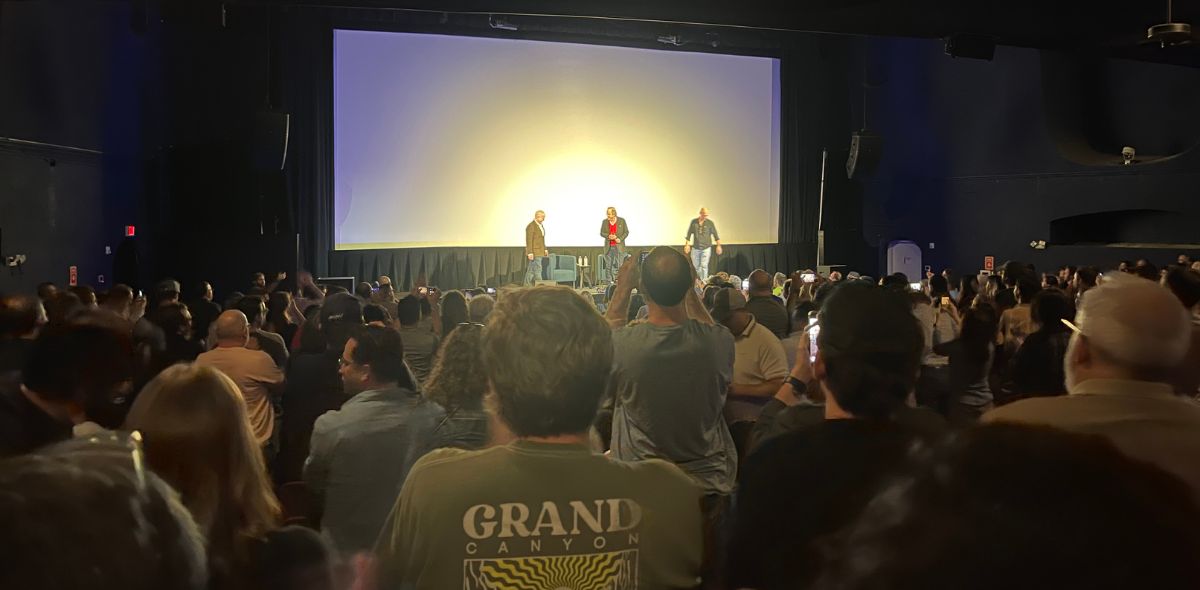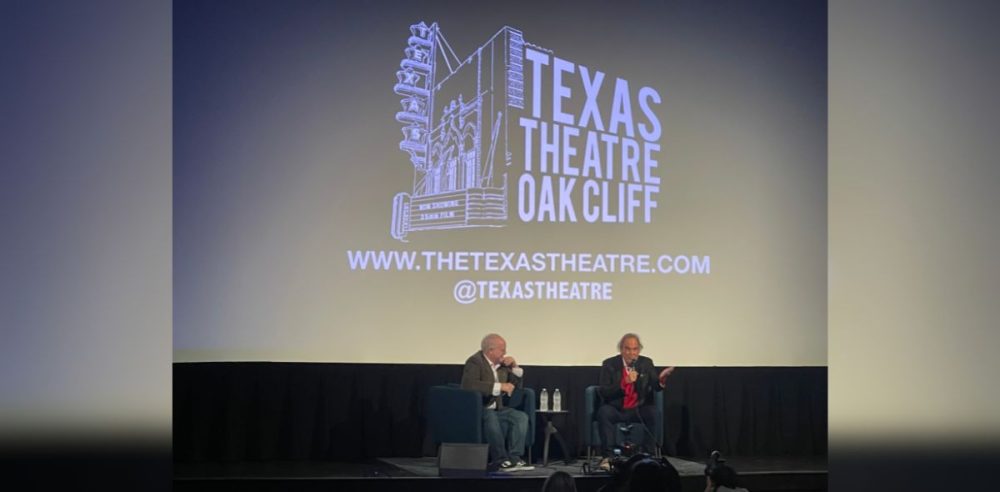On Friday, October 4, a renowned movie was screened in a historic theater where some of the depicted events actually occurred.
Oliver Stone’s JFK was shown to an audience at The Texas Theater in Oak Cliff, where alleged shooter Lee Harvey Oswald was arrested following the assassination of President John F. Kennedy in Dallas on November 22, 1963.
The 1991 picture, starring Kevin Costner and Kevin Bacon, was met with a packed house and an enthusiastic audience of varied ages, ethnicities, and backgrounds.
The common thread among viewers appeared to be a shared concern for the state of the union, as seen in their collective applauding or responding to scenes in the film.
The crowd applauded when the film’s protagonist, New Orleans’s prosecutor Jim Garrison, met with X, a high-level figure in Washington, D.C., played by Donald Sutherland. X delivered a monologue condemning the military-industrial complex.
When Garrison made his closing argument in the historic prosecution of alleged assassination conspirator Clay Shaw, insisting that the people can still own their government if they fight for it, the audience again applauded.
A sequence borrowed from the famous Zapruder film, a home movie filmed from the grassy knoll that showed the president’s head being torn open by an assassin’s bullet, elicited audible gasps from the audience.

When the credits rolled, and Stone assumed the stage for a Q&A session, the audience rose to their feet in a standing ovation.
The first question to the director was how he became interested in the JFK assassination.
Stone responded that he began to become suspicious of the government when he heard that certain key figures in the 1974 kidnapping of heiress Patty Hearst were connected to government agencies. This set him on a journey: “Through the 1970s, I began to educate myself,” he said.
Stone added that he has been “suspicious of the media” ever since he made the picture because he felt “there is an agenda [in the attacks of the press at the time],” concluding, “Alternative media is the only solution.”
Of Garrison’s case against Shaw, which ultimately failed, Stone said, “Garrison had a weak case, but Shaw was lying [about whatever connection he had to the Kennedy assassination].”
The film’s plot leaves Oswald’s connection to the assassination ambiguous, although its narrative depicts Oswald as either a patsy or not involved in the assassination at all. Multiple scenes hammer the point that there had to be more than one shooter and perhaps as many as three.
One sequence during the film shows Oswald being identified and later dragged from his seat in The Texas Theater by police, in the very room where the audience was seated.
The Dallas Express could not immediately determine who was sitting in Oswald’s seat. Oswald had been apprehended while watching Cry of Battle and War Is Hell, two films the theater rescreened on the 60th anniversary of his arrest last year.
Oswald was killed two days after the assassination of JFK when he was shot by nightclub owner Jack Ruby while in police custody. Ruby died of lung cancer in 1967.
The screening of the Stone film came a little over a month before the 61st anniversary of JFK’s assassination and the killing of Oswald.


